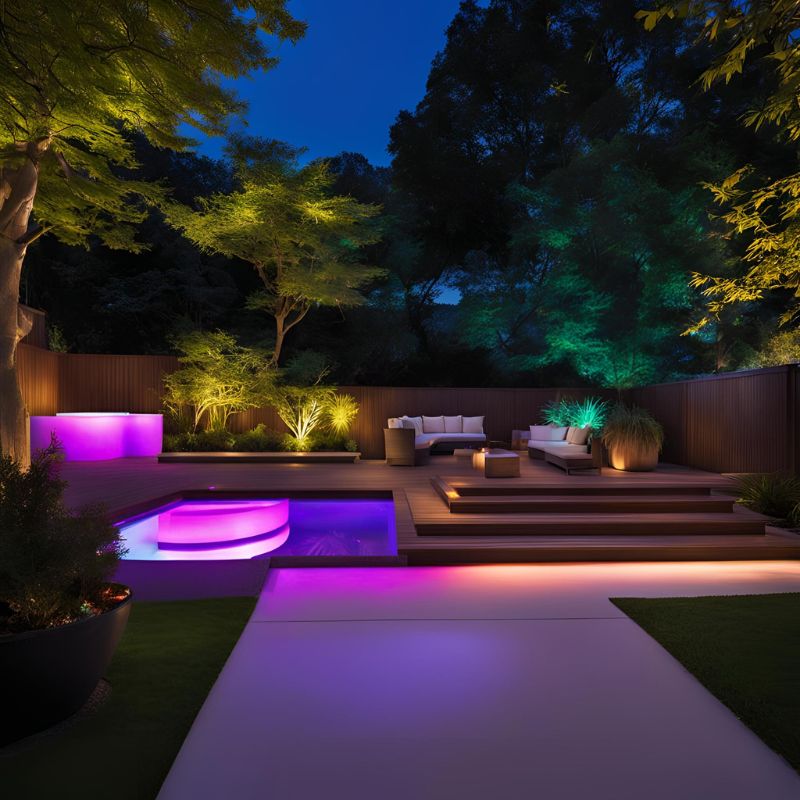Market Growth and Key Drivers
1. Energy Efficiency and Cost Savings
One of the primary reasons for the rapid adoption of outdoor LED lighting in 2015 was its superior energy efficiency compared to traditional lighting solutions such as high-pressure sodium (HPS) and metal halide lamps. LEDs consumed up to 50-70% less energy while providing better illumination and longer lifespans (typically 50,000 to 100,000 hours). Municipalities and businesses increasingly invested in LED streetlights and parking lot lighting to reduce electricity bills and maintenance expenses.
2. Government Policies and Incentives
Many governments worldwide implemented policies to encourage the adoption of LED lighting.
For example
The U.S. Department of Energy (DOE) continued its support for LED technology through funding and initiatives like the Municipal Solid-State Street Lighting Consortium.
The European Union enforced stricter regulations on energy efficiency, phasing out inefficient lighting technologies.
China’s 12th Five-Year Plan emphasized green energy solutions, leading to large-scale LED streetlight replacements in cities like Beijing and Shanghai.
These policies accelerated market growth, with global LED lighting penetration reaching approximately 28% in outdoor applications by the end of 2015.
3. Smart Lighting and IoT Integration
Cities began integrating LED streetlights with IoT (Internet of Things) platforms, enabling remote monitoring, adaptive dimming, and predictive maintenance. Companies like Philips (now Signify), Cree, and Osram introduced connected lighting solutions that improved energy management and reduced operational costs.
4. Declining LED Prices
The cost of LED luminaires continued to drop in 2015 due to improved manufacturing processes and economies of scale. According to industry reports, the average price of LED streetlights fell by 15-20% compared to 2014, making them more accessible to municipalities and businesses.
Challenges Facing the Industry
1. Initial High Investment Costs
Although LED prices were declining, the upfront cost remained a barrier for some buyers, particularly in developing regions. Many cities relied on financing models like Energy Savings Performance Contracts (ESPCs) to fund large-scale LED conversions.
2. Quality and Standardization Issues
The market saw an influx of low-quality LED products, especially from smaller manufacturers, leading to concerns about durability and performance. Governments and industry groups worked on establishing stricter certification standards (e.g., DLC, ENERGY STAR) to ensure product reliability.
3. Heat Dissipation and Performance in Extreme Conditions
Outdoor LED lights faced challenges in harsh environments, such as extreme temperatures and humidity. Manufacturers invested in better thermal management solutions to enhance product longevity.
Regional Market Trends
North America
The U.S. and Canada led in LED streetlight adoption, with major cities like Los Angeles and Toronto completing large-scale retrofits. The U.S. market was valued at over $2.5 billion for outdoor LED lighting in 2015.
Europe
European countries focused on sustainability, with the UK, Germany, and Scandinavia investing heavily in smart LED lighting projects. The EU’s Horizon 2020 program funded research into next-generation LED technologies.
Rest of the World
Emerging markets in Latin America and Africa began adopting LED lighting, though at a slower pace due to budget constraints.
Future Outlook
The outdoor LED lighting industry was poised for continued expansion beyond 2015, with trends such as:
Increased adoption of solar-powered LED lights in off-grid areas.
Advancements in Li-Fi (Light Fidelity) technology, enabling data transmission through LED lighting.
Further integration with smart city infrastructure, including traffic monitoring and environmental sensors.
Conclusion
2015 was a pivotal year for the outdoor LED lighting industry, characterized by rapid technological advancements, declining costs, and growing adoption across urban and commercial applications. While challenges such as quality control and high initial costs persisted, the long-term benefits of LED lighting ensured its dominance in the market. With ongoing innovations in smart lighting and sustainability, the industry was set to play a crucial role in global energy efficiency efforts in the years to come.



